Tropical Storm Barry could bring 2 feet of rain, disastrous flooding to Louisiana
Barry may reach hurricane strength by landfall, but rain is a bigger fear.
Tropical Storm Barry continues to slowly track north toward the Gulf Coast on Friday night, bringing the potential for as much as 2 feet of rain in parts of Louisiana and disastrous flooding as a result.
The storm was moving west-northwest at just 4 mph with maximum sustained winds at 65 mph late Friday, but the storm is likely to strengthen throughout the day. The forecast path suggests that the storm will make landfall Saturday, potentially as a category 1 hurricane.
Regardless of whether the storm manages to reach wind speeds of a low-end hurricane, the concern is for "long duration heavy rainfall" and "life-threatening storm surge" from the slow-moving system, according to the National Weather Service.
With parts of New Orleans already underwater from previous rainfall, this will be the first time a major tropical storm or hurricane has struck the state with the Mississippi River at a flood stage, which could be due to "climate change or climate disruption," Louisiana Gov. John Bel Edwards told "Good Morning America" Friday morning.
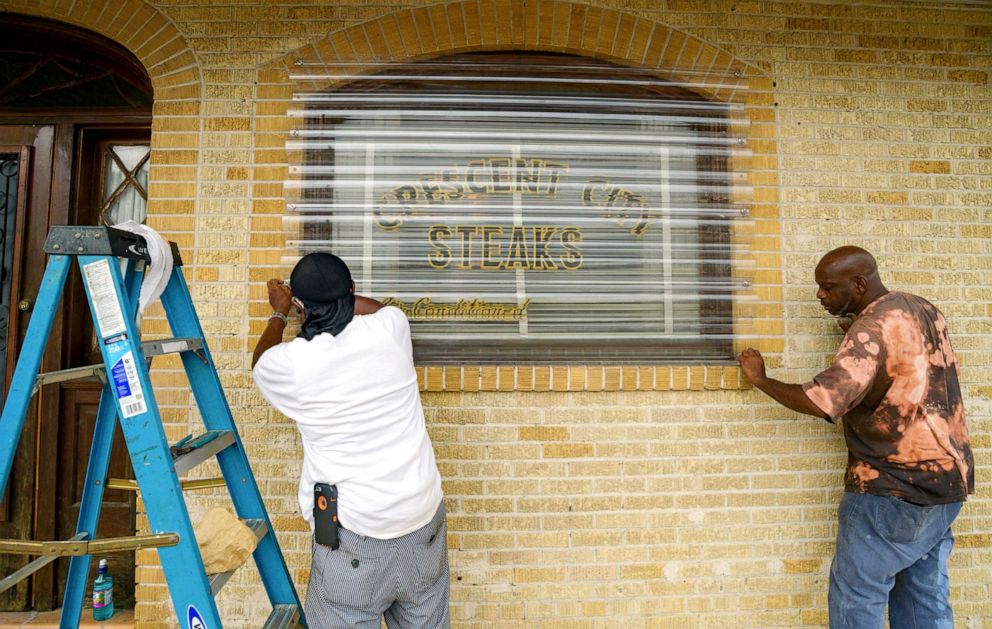
The already-swollen Mississippi River is presenting concerns for responding authorities. However, the River is forecast to rise to 19 feet and officials appear confident that the levee system will be able to withstand those levels.
On the current track, Barry will make landfall along the Louisiana coast line sometime late Friday or early Saturday morning.
Morgan City, Louisiana, is forecast to be the approximate spot the storm comes ashore. The National Guard has already sent 60 troops to the city as a precaution.
"We don't have the pumping capacity to handle 20 inches of rain if it comes at one time," Morgan City Mayor Frank Grizzaffi told ABC News. "We have great levee systems here in the city, so that's all protected, but we're all under pump; 100% of the city is under pump with seven pumping stations. The governor's office has sent us some additional pumps today, so we got eight new pumps that we're placing in strategic areas. But we can typically handle the first 5 inches of rain and then after that, 1 inch per hour.
"So we're hoping that we get some heavy rain, that it stops and lets us catch up, and we're ready for the next batch. But if we get five, six hours in a row that dumps double digits on us then we're gonna have some water that's close to houses."
Hurricane warnings, tropical storm warnings, flash flood watches and tropical storm watches have been issued for parts of the Gulf Coast as Barry comes closer to the shoreline. Tornadoes are possible through Friday night before the storm reaches land.
"We're obviously in an all-hands-on-deck mode, and the preparations are not just in New Orleans but statewide," Edwards said.
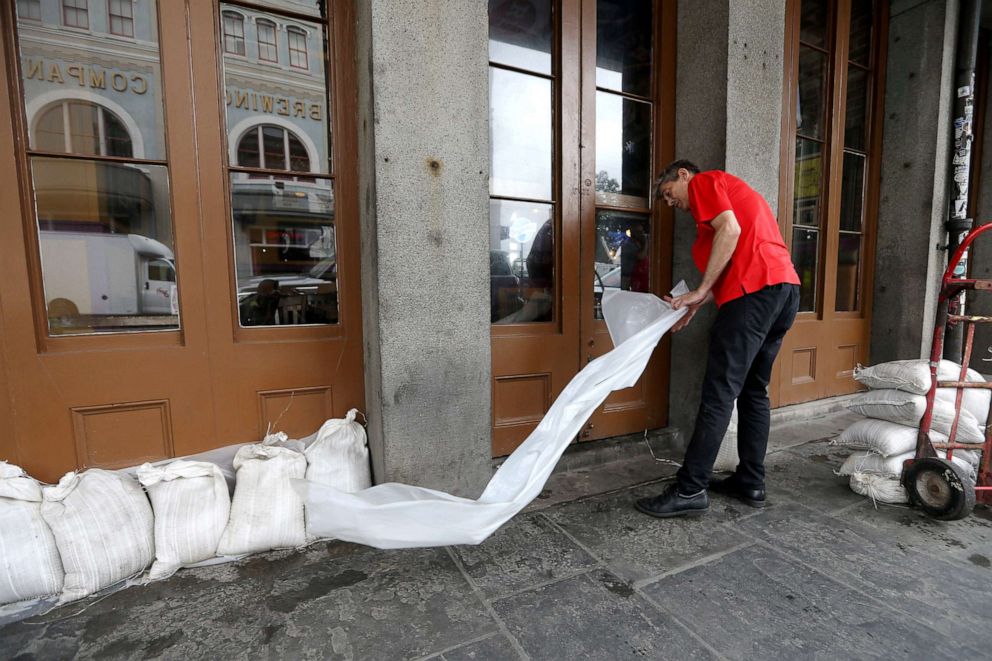
Mississippi's governor, Phil Bryant, also signed a state of emergency proclamation Friday afternoon.
The storm is expected to weaken from Saturday into Sunday after making landfall, but the problems caused by heavy rain and flooding will continue steadily.
'There are three ways that Louisiana can flood: storm surge, high rivers and rain. We're going to have all three.'
About 3,000 National Guards troops have been stationed across the state, as well as search-and-rescue teams with boats and hundreds of buses to transport those who are rescued to shelters in central Louisiana, Edwards added. A task force from Texas also has arrived to assist.
Certain airlines are proactively canceling flights Friday and Saturday scheduled to go to or from New Orleans. According to FlightAware, 24 Friday flights and 28 Saturday flights have been canceled so far.
Additionally, a Rolling Stones concert set to be held Sunday has been rescheduled for Monday, New Orleans Mayor LaToya Cantrell said at a news conference midday Friday.
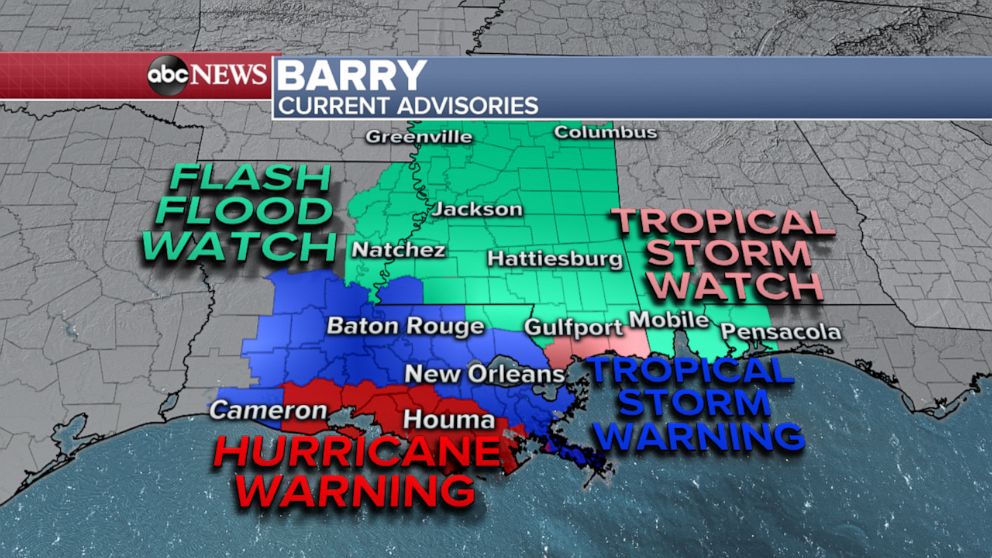
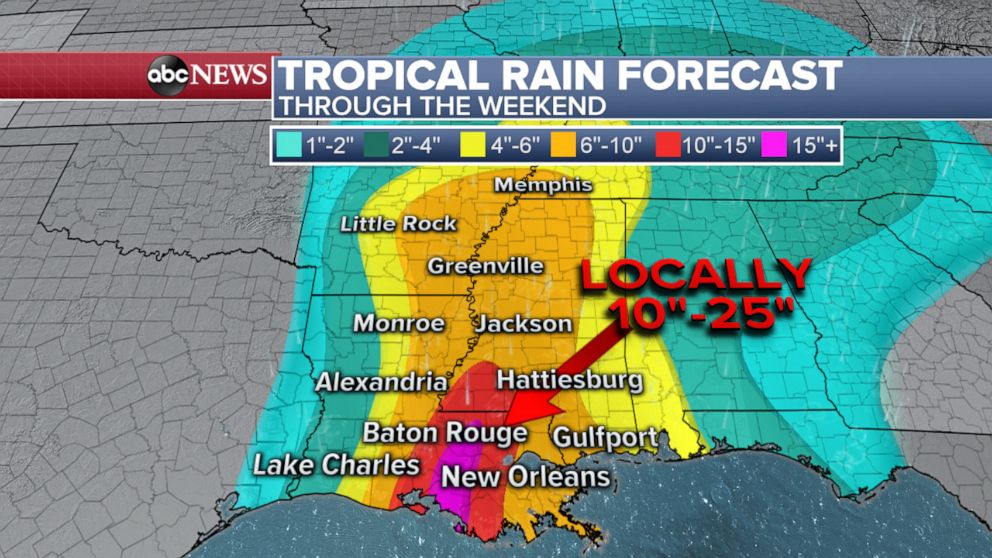
Cantrell called for residents who have decided not to evacuate to hunker down and prepare their properties. She specifically asked for people to clear debris from drains and secure trash cans.
The U.S. Coast Guard also announced it was pre-staging assets along the Louisiana coast in order to be prepared following landfall.
All of the floodgates around the city have been closed, and emergency responders have been placed on high ground.
A spokesperson for the National Weather Service called Barry "a dangerous and life threatening storm."
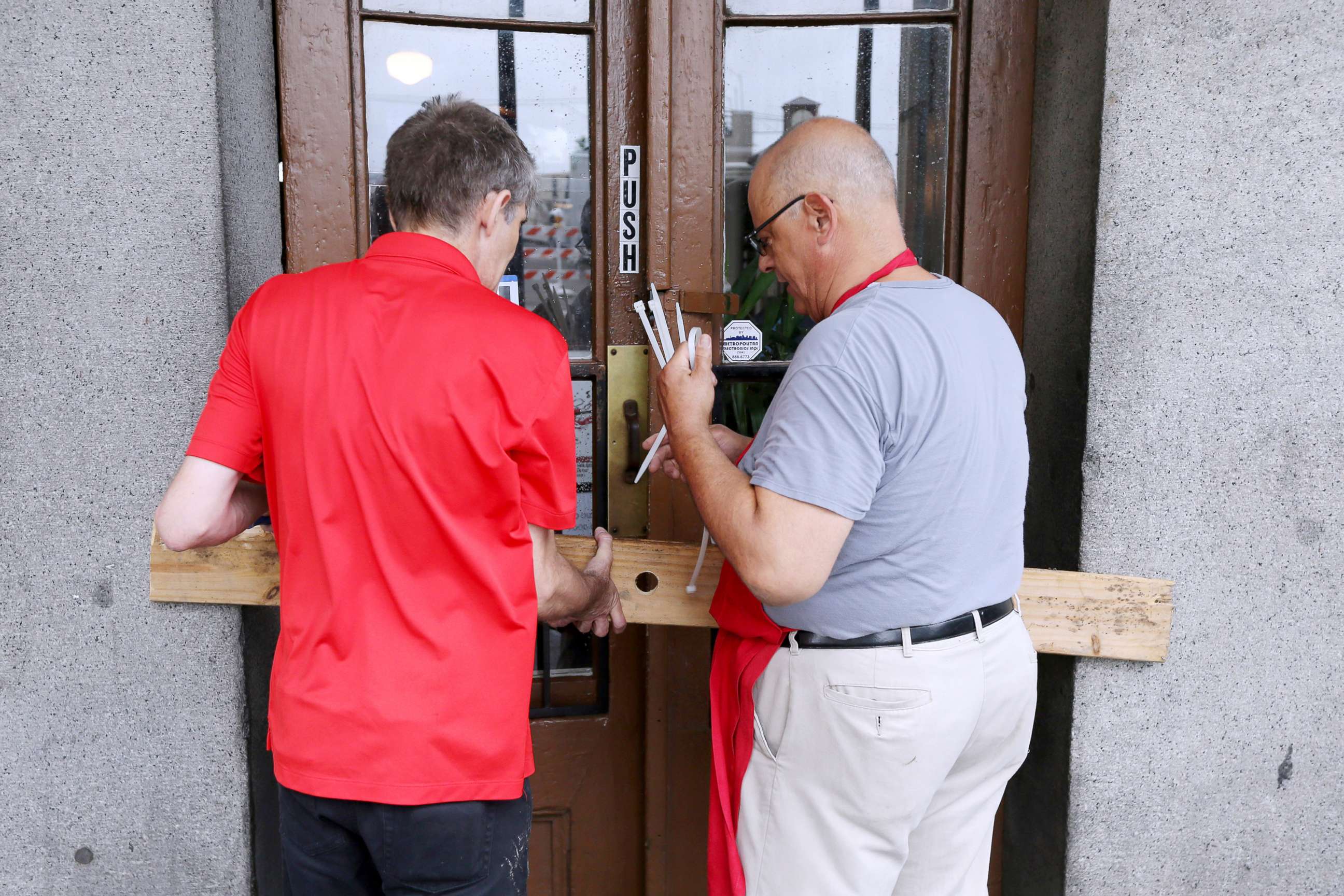
The fact that parts of Louisiana are already underwater are presenting problems that officials have not had to face previously.
"This is not something we've had to deal with before," Edwards said in an interview airing on "Good Morning America." "This is a statewide effort, and we're going to do everything we can to protect life and property."
The White House officially issued an emergency declaration for Louisiana late Thursday, authorizing the Federal Emergency Management Agency to coordinate disaster relief efforts.
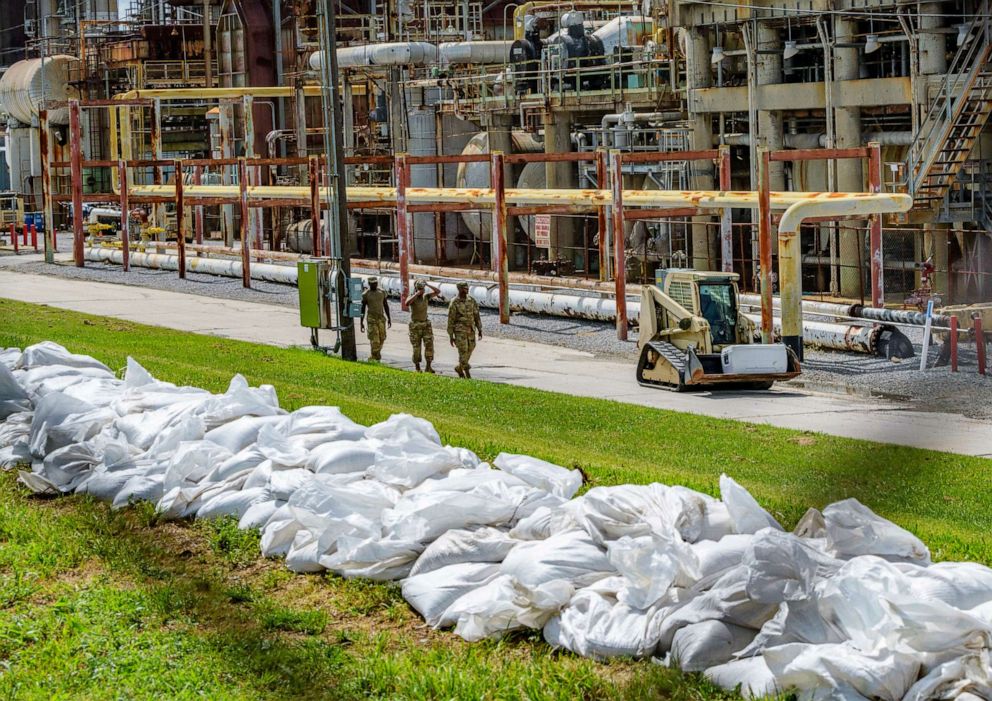
Trump himself tweeted, "Please be prepared, be careful & be SAFE!" to the residents of the state.
Tropical showers are expect to pick up in intensity across parts of the Gulf Coast Friday. Some of these tropical rain showers could have rainfall rates of 2 to 3 inches per hour, and could spawn tornadoes. The risk for tornadoes will increase during the evening hours as Barry comes closer to the shoreline -- especially over southern Louisiana and parts of southern Mississippi.
Storms have already soaked parts of the coast. Downtown New Orleans received 6.27 inches of rain on Wednesday and much more is expected as the storm gets closer to shore.
The Mississippi River is expected to rise to about 19 feet on Saturday, according to the National Weather Service, which would test levees in New Orleans.
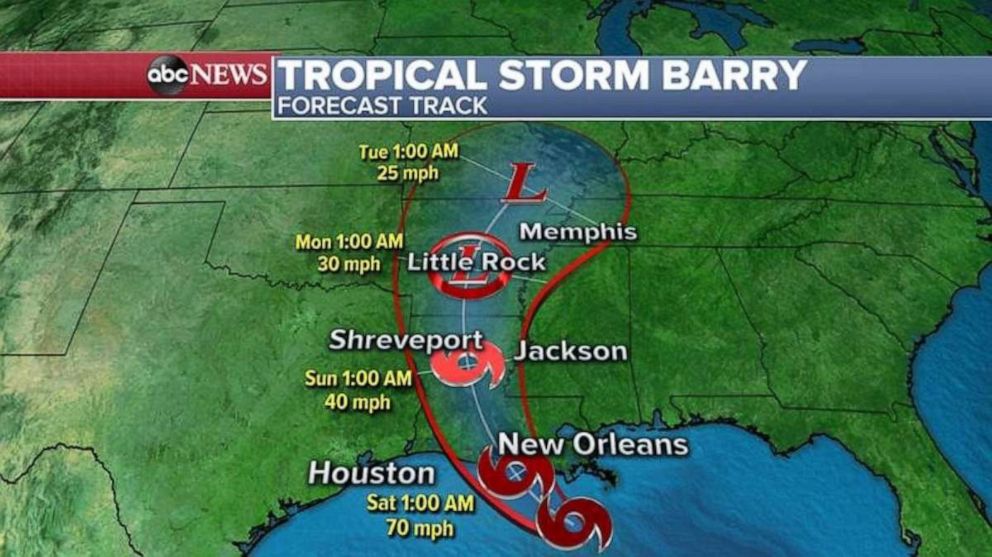
Towns along the coast are beginning to issue evacuation orders. Mandatory evacuations were issued for Grand Isle on Thursday, while a recommended evacuation order was given for Port Fourchon. Plaquemines Parish had already received evacuation orders on Wednesday.
Storm surge will begin to increase in parts of southern Louisiana throughout Friday, as winds begin to push water up against the shoreline. The surge will likely reach its maximum during the evening and overnight hours, and during the high tide cycles. Winds will increase in southern Louisiana throughout the day, occasionally gusting over 50 mph, which could cause scattered downed trees and power outages.
Landfall is only the beginning of the main impacts from this tropical system.
"There are three ways that Louisiana can flood: storm surge, high rivers and rain," Edwards said on Thursday. "We're going to have all three."
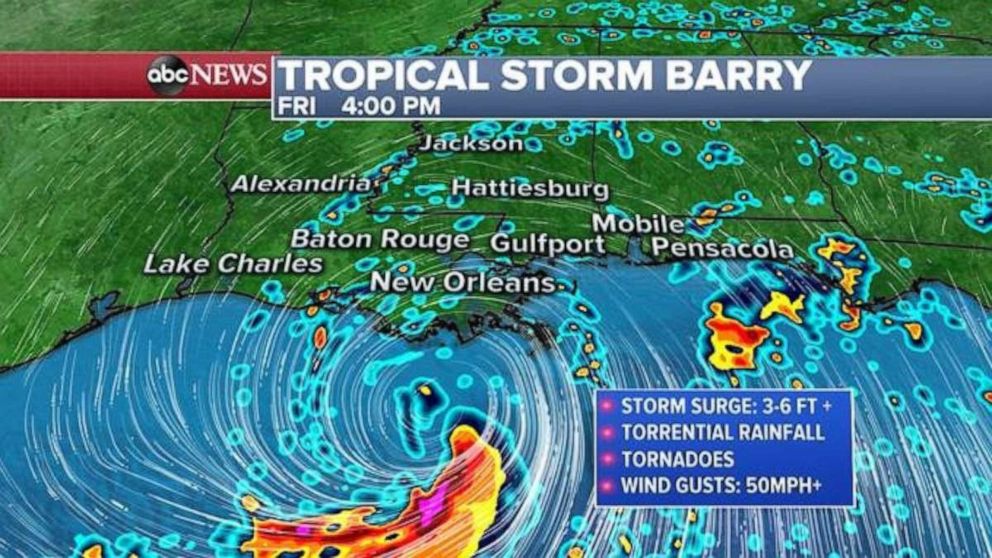
Barry will bring an onslaught of torrential rain leading up to, during, and after landfall. The heavy rain will fall directly east of the center of the storm. Rainfall rates of 2 to 3 inches per hour on Saturday will lead to widespread flash flooding.
As much as 15 to 25 inches of rain is possible in the bands directly east of the center of the storm. This will lead to life-threatening and potentially disastrous flooding in parts of Louisiana.
Some of the heavy rain will also spread into parts of Arkansas and Mississippi late in the weekend and early next week.
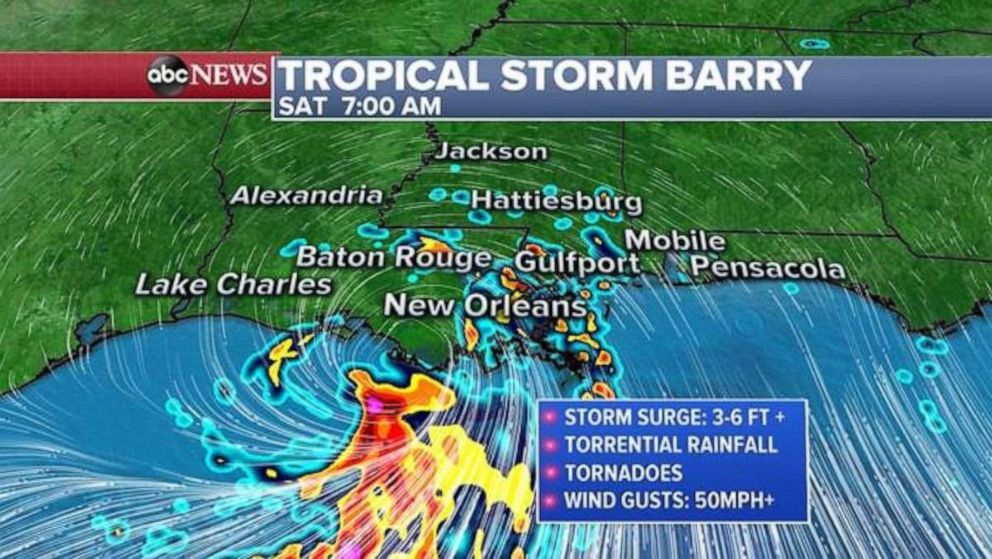
Louisiana had record flooding in August 2016, when torrential rain, fed by deep tropical moisture, caused rainfall of 20 to 30 inches in parts of southern Louisiana and Mississippi from Aug. 11 to 13.
There were 13 people killed during that period as flash flooding was reported as well as record river flooding. An estimated 50,00 to 75,000 structures flooded during this three-day time period, along with the closures of major interstates.
Experts point to the record flooding in August 2016 as an example of how damaging disastrous floods can be, even if they don't reach the level of being a named tropical storm.




